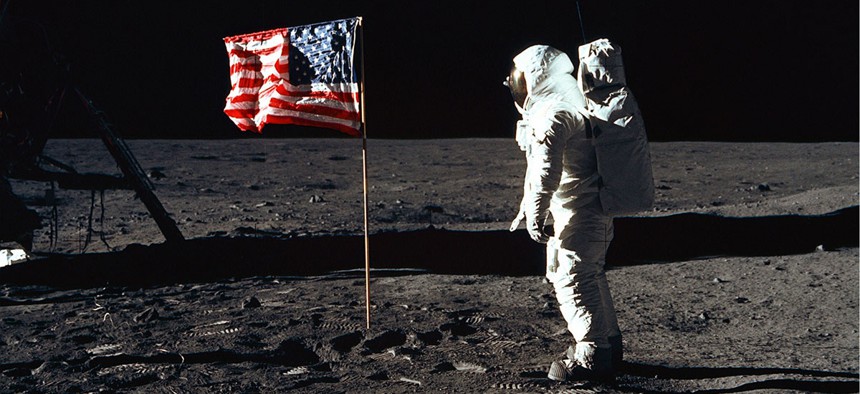Suit Up! 50 Years of Spacewalks

Astronaut Buzz Aldrin, lunar module pilot of the first lunar landing mission, poses for a photograph beside the deployed United States flag during an Apollo 11 Extravehicular Activity (EVA) on the lunar surface. NASA
NASA latest documentary looks back on astronauts stepping outside of their comfort zones -- literally.
On March 18, 1965, Soviet Cosmonaut Alexei Leonov became the very first human to walk in space. The U.S. caught up quickly. On June 3, 1965, Edward White became the first American to do so.
Fifty years later, NASA is taking an in-depth look at the spacewalk -- EVA for "extravehicular activity" in NASA parlance -- and its part in human space exploration.
Spacewalks "look like they're incredible fun," NASA Administrator Charles Bolden said. "And they probably are for the crew member when you really get down to it. But we must never forget how dangerous they are."
Since those first forays out into space, the spacewalk has evolved from a method of one-upmanship during the space race, to an actual tool to get things done on scientific and exploratory missions. Now, NASA has completed 264 spacewalks. Of those, 184 were spent assembling the International Space Station, while 23 spacewalks focused on repairing the Hubble Space Telescope.
NASA scientists, engineers and astronauts are now hoping to build the next generation of spacesuits to conduct future spacewalks as we venture further out into the solar system.
"For anyone who goes on an EVA stroll back on the moon or on Mars -- and we'll do both one day, I know that'll happen -- take duct tape," said former Apollo astronaut Eugene Cernan.
To learn more, check out NASA's documentary below:



